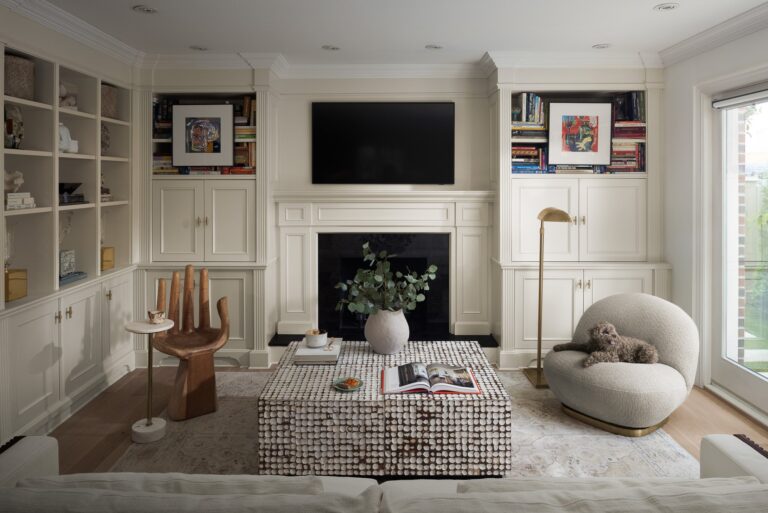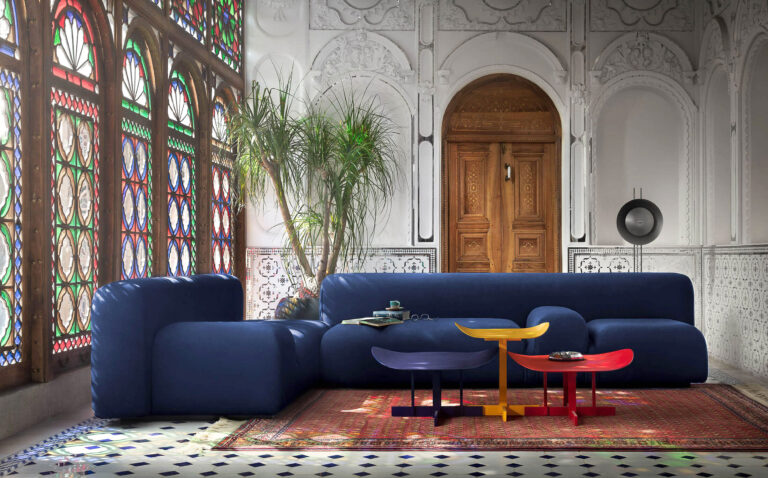The First Step of styling in interior photography, Creating a Sense of Presence
styling in interior photography begins with the understanding that each element in the frame contributes to the story. It’s not simply about adding decorative items like books on a coffee table or a steaming cup; it’s about cultivating a sense of presence. Every object and arrangement should evoke the atmosphere of a real, lived-in space. From the thoughtful placement of a chair by a window to the delicate arrangement of tableware, these choices guide viewers to feel the space as if they were truly occupying it. This attention to detail is crucial in interior photography, where every element contributes to the visual narrative.

styling in interior photography, The Power of Visual Storytelling
Much like the storytelling we experience through books, the narrative in interior photography unfolds with a sense of progression and discovery. Each photo should reveal a new angle or detail that pulls viewers deeper into the story, helping them explore the relationship between the space and its potential inhabitants. In this way, styling becomes a form of visual storytelling, with each detail serving as a “page” that adds depth to the overall narrative.
Just as comforting childhood stories transported us to imagined worlds, styling a space for photography should create a journey that allows viewers to temporarily escape their surroundings. By immersing themselves in the design, viewers can interpret the space through a personal lens, sparking an emotional response that aligns with the vision of the designer.

Styling for the Camera vs. Styling for the Eye
Styling goes beyond adding objects; it starts with setting up the frame, choosing the right angle, and curating details that enhance the intended experience. Each element, from furniture to decor, should support the narrative without overwhelming it.
What feels natural and appealing to the eye doesn’t always translate directly into a photograph. Styling for the camera often requires thoughtful adjustments that may appear exaggerated or unconventional but are necessary to achieve balance and clarity in the image. The camera allows us to manipulate space by compressing or decompressing elements to emphasize specific aspects of the design. By choosing the right focal point or altering the ambient light, we can draw attention to key areas within the frame, enhancing the intended mood and focus.
Additionally, styling interiors for photography involves creating a sense of order and tidiness that reads well in a still image. Every item needs purpose and placement, avoiding any visual distractions that might detract from the overall impression. Through strategic arrangements, photographers can “fool” the camera, using these techniques to reveal the essence of the design and the story behind the space.
The Role of Lighting in Styling Interior Photography
Lighting is a pivotal element in styling interior photography, as it not only illuminates the space but also sets the mood and emphasizes the design’s key features. Natural light creates warmth and authenticity, while artificial light can highlight specific areas or add drama to the composition. The interplay of shadows and highlights helps create depth, guiding the viewer’s eye through the frame. Thoughtfully curated lighting can transform an ordinary scene into an evocative narrative, making the space come alive with character and emotion.
Conclusion
Styling in interior photography is an artful blend of storytelling and design. By moving beyond simple decor and focusing on crafting an immersive narrative, we offer viewers a meaningful connection to each space. This approach ensures that the visual experience aligns with the designer’s intent, presenting the space not just as a setting but as a story waiting to be explored.
Visit the Nimkat Studio to see our other work samples.
